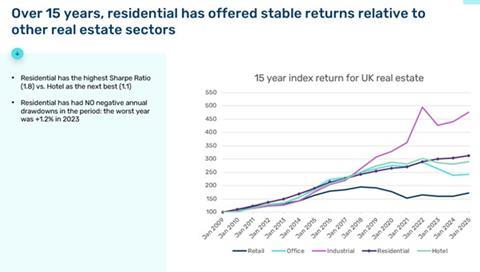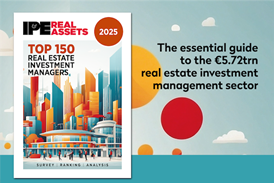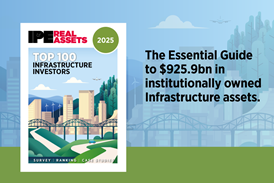Affordable housing could be a viable option for investors looking for inflation-linked, diversified returns from their real estate portfolios, writes Shamez Alibhai
The demand for affordable housing in the UK is rising rapidly. We’ve seen many households priced out of the housing market within a single generation, and as economic opportunities continue to concentrate in areas with strong social and scalable networks, access to affordable housing is becoming even more difficult.

On the supply side, constraints such as restrictive planning rules, oligopolistic market structures, and an underfunded housing association sector are also widening the gap between the supply and demand of affordable homes.
It’s a growing societal issue that needs to be addressed. We estimate the capital requirement to address the affordable housing crisis in the UK to be approximately £20bn (€23bn) per year – and we see it as an opportunity.
The dynamics driving an investment opportunity
There are several factors that contribute to the strong investment case for affordable housing.
The first is the alignment of interests with the new UK government, which has increased its focus on affordable housing as part of its long-term housing strategy. As part of its Plan for Change, the government is on track to build 1.5m new homes and deliver the biggest increase in social and affordable housebuilding in a generation.
This is creating a degree of certainty for investors, while also boosting supply.
The government is also taking steps to alleviate issues on the demand side. One of the current challenges is the absorption rate of housing in the market, as the private sale market can only accommodate a limited number of homes.
To overcome this and to achieve its housing targets, the UK government recognises that a multi-tenure approach is necessary, encompassing homes for sale, private rent and affordable rent.
Secondly, the UK rental housing market has offered stable returns relative to other real estate sectors – even during challenging economic periods. It has provided the best sharpe ratio of any major real estate asset class since 2009, as shown in the graph below.

Past performance is not indicative of future results
Indices are unmanaged, and performance is shown gross of fees. One cannot invest directly in an index.
As an asset class more broadly, affordable housing presents a range of benefits, making it an attractive option for pension schemes and institutional investors.
One of the key advantages is the long-term stability of income, which is supported by secular trends such as evolving demographics and policy initiatives. It can offer mitigation against inflation, as affordable housing rents in England are explicitly linked to CPI through the rent setting formula, and can be used to diversify portfolios, providing a hedge against other real estate asset classes.
Finally, investing in affordable housing allows investors to help tackle a growing societal issue — access to high-quality affordable homes. The benefits are two-fold as investors can help to reduce housing inequality, support community development, and achieve their social and carbon targets, all without compromising on target returns.
Too good to be true?
While affordable housing can provide unlevered core-plus style returns, which are steady moderate risk investment returns, it is important to be aware of some of the risks that are inconsistent with this return profile.
One is planning risk. Planning approvals are not straightforward and require careful assessment of outstanding issues and the authority level needed to approve any required changes. The good news is that the government is looking at ways to speed up the planning approval process and to ‘get shovels in the ground quicker’ through the upcoming Planning and Infrastructure Bill.
Another is the credit risk of contractors, particularly amongst smaller contractors and housebuilders, that often carry a higher risk of default - which is frequently not reflected in pricing.
Growth of the private rental market also needs to be factored in. Investors may seek to avoid areas where the private rental market growth is lower than inflation, as this can erode returns over time.
Place-making is an important part of the design process which ensures the creation of public spaces that foster community well-being, identity, and interaction. Affordable housing projects need to carefully consider tenure mix, site location and design. Failing to do so at the early stage can lead to higher management costs in the future.
Finally, the regulatory environment is placing a higher hurdle on investment managers regarding operations and regulatory licensing. This includes meeting evolving compliance standards, adhering to robust governance frameworks, ensuring transparent reporting, and securing all the relevant authorisations. This is a resource-intensive process that must be carefully navigated, which can deter those who are less experienced in the market.
Looking ahead
In our view, affordable housing could be a consideration for investors seeking inflation-linked diversified returns from their real estate allocations. It is a sector that will require significant amounts of private capital in the near to medium term to establish it as a key and permanent part of the real estate landscape.
There have been a large number of investment managers who have entered the space, so allocators are currently spoilt for choice. However, as the market evolves, we anticipate consolidation within the sector that will result in a few winners, which will be those who can provide the most robust investment and management processes needed to deliver successful projects and generate returns for investors.
To read the latest IPE Real Assets magazine click here.


















